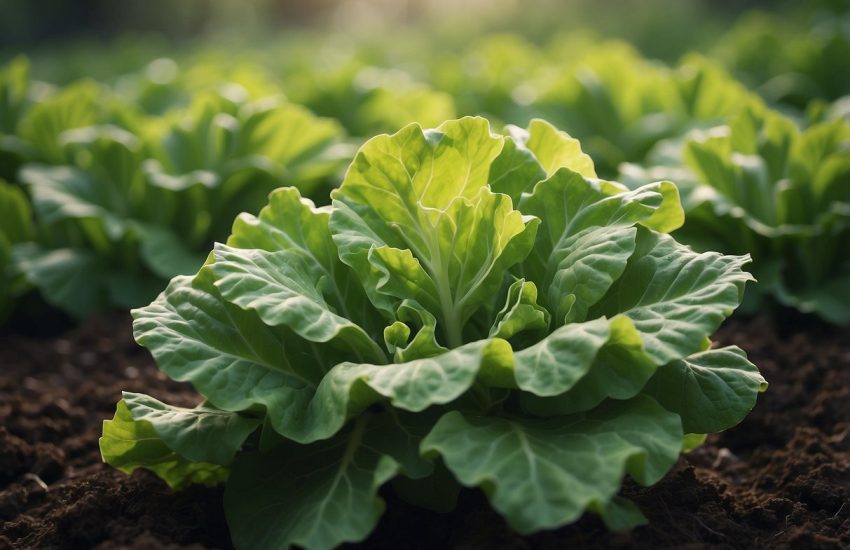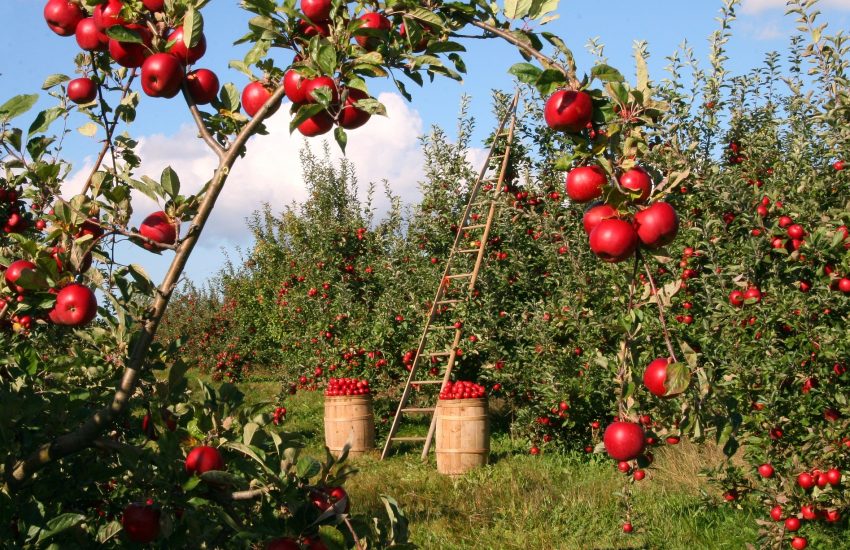Can You Grow Pistachios in Florida? A Comprehensive Guide
Pistachios are a popular snack and ingredient in many dishes, but can they be grown in Florida? This question has been asked by many Floridians who are interested in growing their own pistachio trees. The answer is not straightforward, as there are several factors to consider when attempting to grow pistachios in Florida.

First and foremost, pistachio trees require a certain amount of chilling hours to produce a good crop. Chilling hours are the number of hours below 45°F that a tree experiences during the dormant season. In Florida, the chilling hours are typically not sufficient for pistachio trees to thrive. However, there are some varieties of pistachio trees that require fewer chilling hours and may be more suitable for Florida’s climate.
Another important factor to consider is the soil and water conditions. Pistachio trees prefer well-drained soil and do not tolerate standing water. Florida’s high water table and frequent rainfall can make it difficult to grow pistachios without proper irrigation and drainage systems in place. Additionally, the soil in Florida may not have the ideal pH and nutrient levels that pistachio trees require.
Overall, while it is possible to grow pistachios in Florida, it may not be the easiest or most practical option. Floridians who are interested in growing pistachios should do their research and consult with experts to determine the best course of action for their specific location and circumstances.
Climatic Requirements for Pistachios

Understanding Florida’s Climate
Florida has a humid subtropical climate, characterized by hot and humid summers, mild winters, and abundant rainfall throughout the year. The state’s climate is influenced by its proximity to the Gulf of Mexico and the Atlantic Ocean, as well as the prevailing winds and the topography of the land.
Importance of Chill Hours and Hot Summers
Pistachios have specific climatic requirements that must be met in order for them to grow and produce fruit. One of the most important factors is the number of chill hours, which is the amount of time that the trees are exposed to temperatures between 32°F and 45°F during the dormant period. Pistachios require a minimum of 800 to 1000 chill hours per year to break dormancy and produce healthy crops.
Another important factor is the amount of heat that the trees are exposed to during the growing season. Pistachios require a long, hot summer to ripen their fruit, with temperatures ranging from 85°F to 100°F during the day and 60°F to 70°F at night. This allows the nuts to develop their characteristic flavor and texture, as well as their distinctive red or green color.
Florida’s warm and humid climate may not be ideal for growing pistachios, as the state does not have enough chill hours or a long enough growing season to support healthy crops. Most of the state falls within USDA hardiness zones 8 to 11, which are not suitable for pistachio cultivation. However, some areas of Florida, such as the panhandle and northern regions, may have a more Mediterranean climate with cooler winters and more chill hours, making them more suitable for pistachio cultivation.
Planting and Cultivation Practices

Selecting the Right Location
When it comes to growing pistachios in Florida, selecting the right location is crucial. Pistachio trees require full sun exposure and well-draining soil to thrive. Therefore, it is recommended to choose a spot in the garden that receives at least 6 to 8 hours of direct sunlight per day.
Soil Preparation and Nutrition
Before planting pistachio trees, it is important to perform a soil test to determine the pH level and nutrient content of the soil. Pistachio trees prefer slightly alkaline soil with a pH range of 7.0 to 7.8. If the soil pH is too low, it can be raised by adding lime. On the other hand, if the soil pH is too high, it can be lowered by adding sulfur.
In addition to pH level, pistachio trees require certain nutrients to grow properly. It is recommended to add organic matter and fertilizer to the soil before planting. Incorporating compost or well-rotted manure can improve soil conditions and provide essential nutrients such as nitrogen, phosphorus, and potassium.
Planting Techniques for Pistachio Trees
When planting pistachio trees, it is important to space them properly to allow for adequate sunlight and air circulation. The recommended distance between trees is 20 to 25 feet.
To plant a pistachio tree, dig a hole that is twice as wide and deep as the root ball. Place the tree in the hole and backfill with soil, making sure to tamp the soil down around the roots. Water the tree thoroughly after planting to help settle the soil.
In conclusion, growing pistachios in Florida is possible with the right planting and cultivation practices. By selecting the right location, preparing the soil properly, and using the correct planting techniques, gardeners can successfully grow pistachio trees in their backyard.
Pistachio Tree Care and Management

Watering and Irrigation
Pistachio trees require regular watering during the growing season to ensure optimal growth and yield. The amount of water required depends on factors such as the age of the tree, soil type, and weather conditions. It is important to avoid overwatering, as this can lead to root rot and other diseases.
A drip irrigation system is recommended for pistachio trees, as it allows for precise control of water delivery. The system should be designed to provide water to the root zone of the tree, without wetting the leaves or trunk. During periods of drought, it may be necessary to supplement irrigation with additional watering.
Pruning and Disease Control
Proper pruning is important for maintaining the health and productivity of pistachio trees. Pruning should be done during the dormant season, and should focus on removing dead, diseased, or damaged wood. It is also important to thin out crowded branches to allow for better air circulation and light penetration.
Disease control is an important part of pistachio tree care. Common diseases that affect pistachio trees include verticillium wilt, root rot, and botryosphaeria canker. Regular monitoring and treatment of these diseases can help prevent significant damage to the tree and reduce yield loss.
Pollination and Maximizing Yield
Pistachio trees are dioecious, meaning that they have separate male and female trees. Proper pollination is essential for maximizing yield, and requires planting a mix of male and female trees. It is important to ensure that the male-to-female ratio is correct, as too few or too many male trees can result in poor pollination.
Bees are the primary pollinators of pistachio trees, and should be encouraged to visit the orchard. This can be achieved by providing bee-friendly plants and avoiding the use of pesticides during the bloom period. Proper fertilization and irrigation can also help maximize yield by ensuring that the trees have the nutrients and water they need to produce high-quality nuts.
Harvesting and Post-Harvest Handling
Determining the Right Time to Harvest
Harvesting pistachios at the right time is crucial to ensure maximum yield and quality. The ideal time to harvest pistachios is when they are fully ripe, which is usually indicated by the hull splitting open. The hull protects the nut inside and starts to split open naturally when the nut is mature and ready for harvest.
Growers can also use a few other methods to determine if the pistachios are ready for harvest. They can tap the tree branches with a mallet and observe if the mature nuts fall off. They can also use a refractometer to measure the sugar content of the nut, which indicates the maturity level.
Harvesting Techniques
Harvesting pistachios is a labor-intensive process that requires careful handling to avoid damaging the nuts. The most common method of harvesting pistachios is by using a mechanical shaker that vibrates the tree trunk, causing the nuts to fall onto a catching frame.
After harvesting, the nuts are left to dry in the sun for a few days to reduce their moisture content. The dried nuts are then swept into windrows and collected using harvesters.
Storage and Processing of Pistachios
Freshly harvested pistachios have a high moisture content and are susceptible to mold and insect infestations. Therefore, it is essential to store them properly to maintain their quality and shelf life.
The nuts are first cleaned to remove any debris and sorted based on size and quality. They are then stored in a cool, dry place to prevent moisture buildup and protect them from pests and rodents.
Once the nuts are ready for processing, they are roasted, salted, and packaged for sale. The roasting process enhances the flavor and aroma of the nuts and also helps to extend their shelf life.
In conclusion, harvesting and post-harvest handling play a significant role in determining the quality and yield of pistachios. Proper harvesting techniques, storage, and processing are essential to ensure that the nuts reach consumers in the best possible condition.


